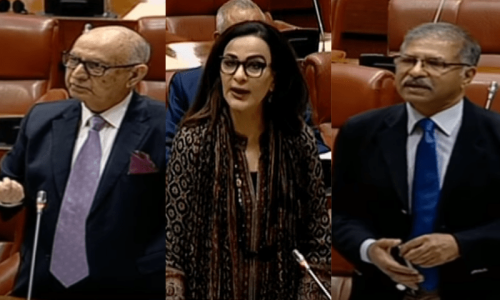WASHINGTON: War-related violence has killed 65,000 people in Pakistan in the last 17 years, including 23,000 civilians, 9,000 security personnel and 90 American contractors, says a report released on Thursday. The rest of the casualties were anti-government fighters.
The report by the Brown University’s Costs of War Project notes that since 2001, when the United States launched its war on terror, about 507,000 people have been killed in Pakistan, Afghanistan and Iraq. The report also warns that there has been a 22 per cent increase in war deaths in the past two years.
As many as 370,000 of these people have died due to direct war violence, including armed forces on all sides of the conflicts, contractors, civilians, journalists, and humanitarian workers.
Fatalities in Afghanistan, as of October 2018, stood at about 147,000 people, including Afghan security forces, civilians and opposition fighters. A total of 6,334 American soldiers and contractors, as well as more than 1,100 allied troops, have also been killed in Afghanistan between 2001 and 2018.
Between 268,000 and 295,000 deaths have occurred in Iraq, where the US-led military intervention began in 2003.
The Ivy League US University, based in Rhode Island, notes that “compelling alternatives to war” were always available but “were scarcely considered in the aftermath of 9/11 or in the discussion about war against Iraq.” And “some of those alternatives are still available to the United States,” adds that report while underlining the costs of ignoring those options: “It is likely that many times more than 370,000 people have died indirectly in these wars, due to malnutrition, damaged infrastructure, and environmental degradation”.
The report notes that 200,000 civilians have been killed in direct violence by all parties to these conflicts, including more than 6,800 US soldiers.
The report mentions that the US government never revealed how many US service members returning from these wars became injured or ill while deployed.
Similarly, many deaths and injuries among US contractors have not been reported as required by law, but it is likely that at least 6,900 have been killed. A contractor is a citizen engaged by a private firm to fight for the US government.
The report shows that the war also caused widespread displacements.
Consequently, 10.1 million Afghan, Iraqi, and Pakistani people are living as war refugees and internally displaced persons, “in grossly inadequate conditions”.
The report warns that the US military is conducting counter-terror activities in 76 countries, vastly expanding the counter-terror war across the globe. The wars have been accompanied by erosions in civil liberties and human rights in the US and abroad.
The study argues that the human and economic costs of these wars will continue for decades with some costs, such as the financial costs of US veterans’ care, not peaking until mid-century.
US government funding of reconstruction efforts in Iraq and Afghanistan has totalled over $170 billion. Most of those funds have gone towards arming security forces in both countries. Much of the money allocated to humanitarian relief and rebuilding civil society has been lost to fraud, waste, and abuse.
The cost of the Iraq, Afghanistan, Pakistan, and Syria wars totals about $5.6 trillion. This does not include future interest costs on borrowing for the wars, which will add an estimated $8 trillion through 2054.
The ripple effects on the US economy have also been significant, including job loss and interest rate increases.
Both Iraq and Afghanistan continue to rank extremely low in global studies of political freedom. Women in Iraq and Afghanistan are excluded from political power and experience high rates of unemployment and war widowhood.
In the US, an average taxpayer owes $23,386 for wars in Afghanistan and Iraq. That’s equivalent to a year at a public university, a new Honda Accord car and the average down payment on a house.
Published in Dawn, November 10th, 2018














































